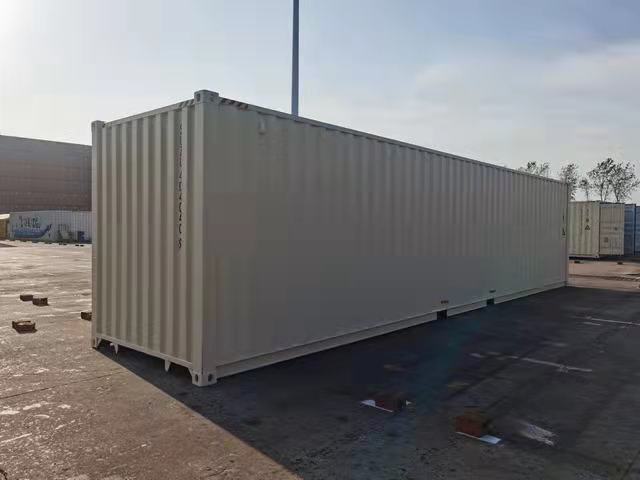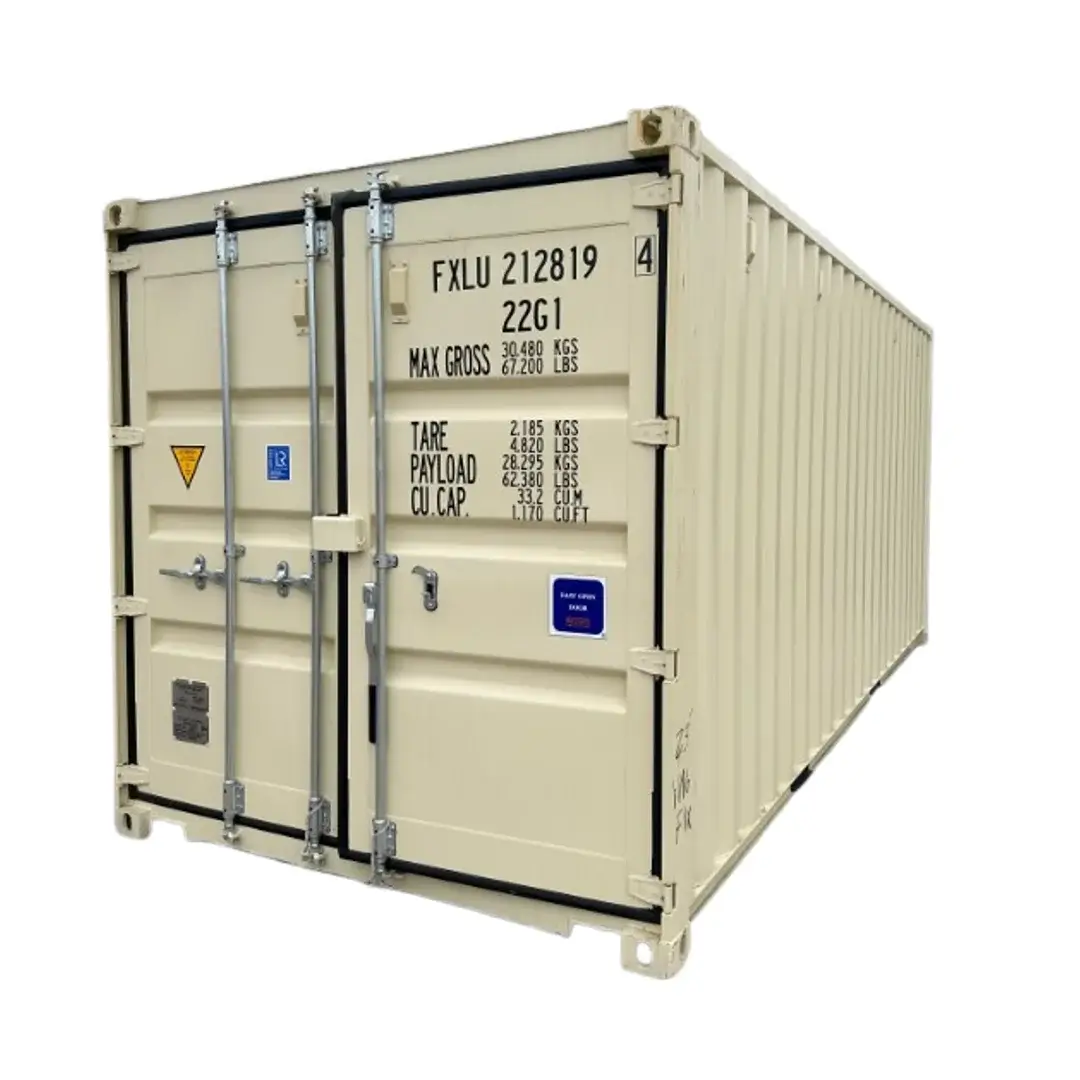The Ultimate Guide to Picking the Right Shipping Container for Your Requirements
When it comes to choosing the appropriate shipping container, comprehending your specific needs is essential. You'll desire to think about aspects like dimension, type, and product to assure you make the best option. From standard sizes to specialized alternatives, there's a lot to check out. And also, budgeting for both the container and any adjustments can make a big difference. Allow's break down the essential elements to help you find the perfect fit for your needs.
Recognizing Shipping Container Sizes
When you're choosing a delivery container, recognizing the various dimensions available is important for making the appropriate choice. Shipping containers generally are available in typical sizes of 20 and 40 feet, but you'll also find other dimensions. Understanding the size you need depends upon what you prepare to shop or transport.If you're relocating smaller sized products, a 20-foot container could be ideal, while larger deliveries often require a 40-foot container. Bear in mind that the elevation can additionally differ; high dice containers supply added vertical room, which can be beneficial for taller goods - Lease New Shipping Container 40' x 8' x 9’6".Before determining, gauge your freight, and think about just how much space you'll require for filling and discharging. Constantly consider prospective future requirements-- choosing a slightly larger container may conserve you trouble down the line. Eventually, picking the appropriate size will enhance efficiency and guarantee your items are safe during transit
Kinds Of Shipping Containers Available
There are numerous sorts of shipping containers available, each designed for details functions and cargo requirements. The conventional dry container is versatile, perfect for basic cargo. If you're delivering disposable goods, consider a cooled container, which keeps a controlled temperature level. For oversized products, high cube containers offer extra height, accommodating taller loads.If you require to carry heavy machinery or equipment, flat shelf containers supply a tough base without walls. Open-top containers allow for easy loading of tall freight, with a detachable tarp covering for protection. If you're seeking versatility, consider a retractable container that can be easily saved when not in use.Lastly, specialized containers like container containers are used for liquids, while vented containers are developed for bulk freight that requires air flow. Recognizing your cargo type will aid you pick the right container to meet your shipping requires efficiently.
Material Considerations for Durability
When selecting a delivery container, the material plays a vital role in its sturdiness. You'll want to evaluate the advantages of steel versus light weight aluminum, specifically relating to deterioration resistance. Comprehending these factors can help you make an extra educated selection for your shipping requires.
Steel vs. Aluminum Containers
Just how do you choose between steel and light weight aluminum containers for your delivery requires? Beginning by considering longevity. Steel containers are robust and offer outstanding toughness, making them optimal for heavy loads and rough conditions. They resist damage from effects and are commonly cheaper, which can be a significant aspect for budget-conscious buyers.On the other hand, aluminum containers are light-weight, which can save you on shipping costs. They're simpler to maneuver and are a great choice if you require to transport goods regularly. Light weight aluminum is typically extra costly and much less robust than steel. Weigh your certain needs very carefully, including weight, price, and the sort of freight you'll be delivery, to make the ideal choice for your scenario.
Corrosion Resistance Aspects
Selecting the ideal material does not just involve weight and cost; rust resistance plays a considerable function in resilience. When selecting a delivery container, take into consideration the environment it'll encounter. Steel containers, while strong, can rust if not appropriately dealt with. Look for alternatives with protective layers or galvanization to improve their life-span. Aluminum, on the other hand, uses all-natural corrosion resistance, making it suitable for coastal areas or damp problems. However, it can be much more pricey. In addition, assess the container's usage-- if it'll be subjected to chemicals or rough weather, prioritize materials that can hold up against these problems. Purchasing a corrosion-resistant container currently can save you from costly repair services or substitutes down the line. Pick wisely for long-term benefits.
Alterations and Customization Options
Delivering containers aren't simply for carrying items; they can be changed to satisfy your particular demands through numerous adjustments and personalization options. You can transform a common container right into a relaxing office, a short-term retail store, or perhaps an individual gym. The possibilities are virtually endless.Think regarding adding home windows, insulation, or air flow to improve convenience. You may also consider electric wiring, pipes, or also customized shelving to boost capability. If safety's an issue, reinforced locks can provide tranquility of mind.For aesthetic allure, you can paint the container or include an unique layout to make it stand apart. Do not fail to remember about floor covering options-- whether you desire resilient plywood or something extra advanced, it can elevate the space.Ultimately, customizing your delivery container to fit your needs can improve usability and produce an unique atmosphere that mirrors your style.
Assessing Your Transport Needs
When it involves utilizing your changed shipping container, understanding your transportation needs is crucial. Start by determining what you'll be delivery-- whether it's heavy tools, retail products, or personal things. Each kind of cargo has different requirements regarding dimension, weight, and accessibility.Next, think about the distance and setting of transport. Are you shipping in your area, country wide, or globally? This impacts the container's layout and functionality. If you're making use of browse this site trucks, assure your container fits basic measurements for very easy loading and unloading.Additionally, consider transit problems. Will your products require unique defense from weather or temperature changes? If so, you may require insulation or air flow attributes in your container.Lastly, assess how typically you'll be moving goods. Frequent shipments may need an extra durable and versatile container to satisfy continuous demands. By attending to these aspects, you'll be well-prepared to pick the right shipping container for your needs.
Budgeting for Your Delivery Container
Establishing a spending plan for your delivery container is crucial for ensuring a smooth buying process. Determine how much you can manage to invest. Prices can vary considerably based on size, problem, and type. New containers usually cost more, but used ones can supply significant savings.Next, take into consideration any kind of extra expenses you might incur, such as transport costs, distribution fees, and alterations. If you intend to tailor the container, element in those costs as well. Research different distributors to compare prices and locate the most effective offer that fulfills your needs.Don' t fail to remember to include any kind of licenses or regulations that might apply to your acquisition and use of the container. By plainly describing your spending plan, you'll be better prepared to make enlightened decisions, guaranteeing you get the appropriate container without breaking the financial institution.
Maintenance and Treatment for Longevity
To assure your shipping container lasts for several years, routine upkeep is crucial. Start by inspecting the exterior for corrosion, dents, and damage. If you detect any type of concerns, address them promptly to avoid additional deterioration. Tidy the container occasionally, both throughout, to get rid of dirt, particles, and moisture that can cause corrosion.Ensure the doors secure correctly and oil the hinges to stay clear of rust and more information sticking. If you're utilizing the container for storage space, consider adding air flow to reduce humidity and mold development. For added protection, apply a rust-inhibiting paint or sealant annually.If your container's situated in a rough environment, like coastal areas, you may need to boost upkeep regularity. Watch on the flooring, as well; any kind of signs of wear ought to be fixed today. With these easy steps, you'll prolong the life of your delivery container considerably.
Often Asked Inquiries
Exactly how Do I Locate a Trustworthy Delivery Container Provider?
To discover a reputable shipping container vendor, start by investigating on the internet reviews, asking for suggestions from buddies or industry contacts, and comparing prices. Always examine their qualifications and warranty they supply top quality containers that fulfill your demands.

Can I Lease a Shipping Container Rather Than Buying?
Yes, you can definitely rent a delivery container rather of getting one. Numerous providers provide rental choices, which can save you cash and give versatility if you just need it for a short duration.
What Allows Are Needed for Container Positioning?

Are Shipping Containers Weatherproof and Suitable for Outdoor Storage?
Yes, delivering containers are generally weatherproof, designed to endure extreme problems. Their durable building and construction maintains your products safe and completely dry, making them ideal for outside storage space. Just More Help ensure appropriate air flow to protect against wetness build-up inside.
Exactly how Do I Move a Delivery Container As Soon As Bought?
